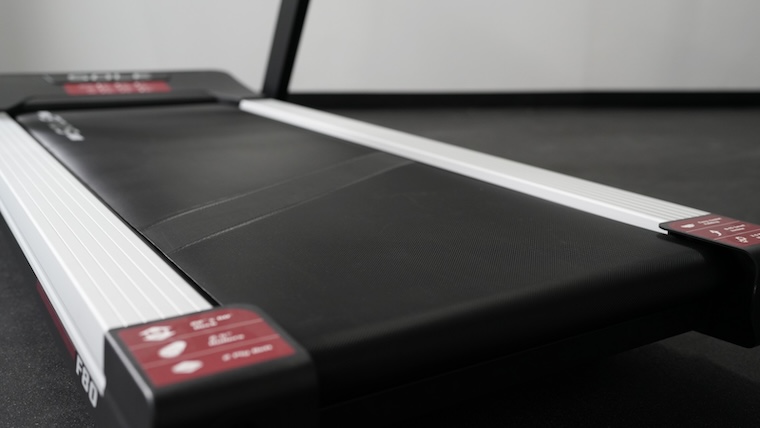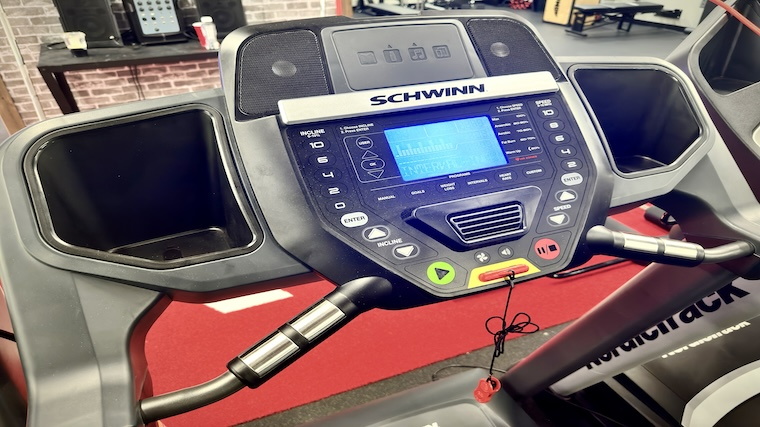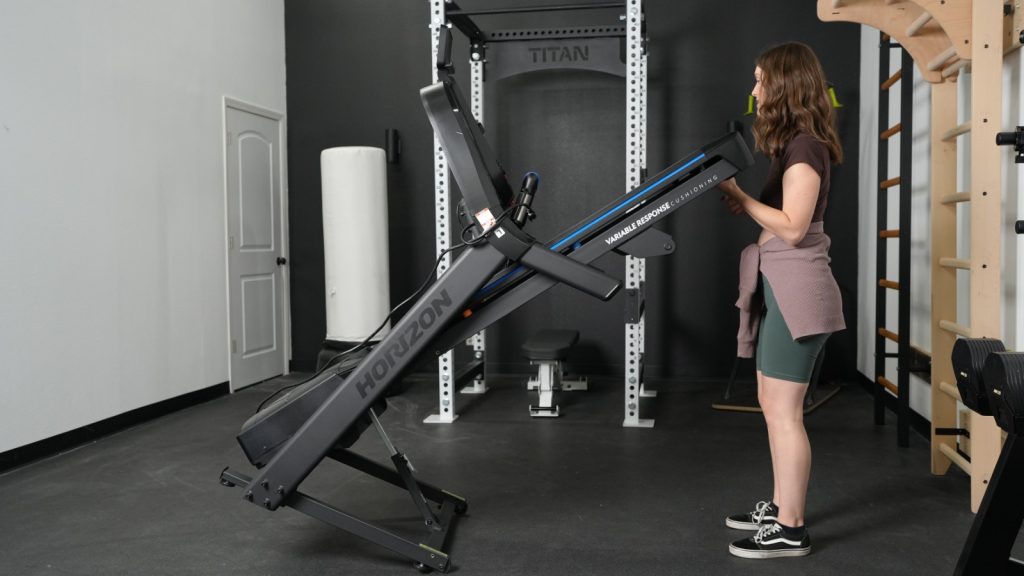At-home treadmills provide users with a wealth of benefits, from weight loss and cardiovascular health to bone density and muscle building. (1) They also offer greater convenience than going to the gym, which might inspire users to run or walk more than they normally would. Unfortunately, even the best treadmills also come with risks if you aren’t careful. And these risks multiply with children around.
According to the U.S. Consumer Product Safety Commission, more than 22,000 treadmill injuries resulted in hospital emergency room visits in 2019. (2) Because treadmills are machines, there are a number of safety risks you must be aware of before setting up and operating your treadmill. These safety risks can be dangerous for children in the home or in a gym. If there are children in the home or gym, then continue reading about the following kids treadmill dangers and how to prevent them.
Home Treadmill Danger Zones
When purchasing a treadmill for the home, it’s easy to overlook the safety risks involved in owning and operating this type of exercise equipment. For those hoping to reap the benefits of cardio with a home treadmill, it’s strongly recommended that you familiarize yourself with the following treadmill danger zones in order to keep you and your children safe.
Running Belt
A treadmill’s running belt is the flat surface that your feet run on. Typically, a motor will power the belt to move over the deck, so that you can run or walk on the machine. Unfortunately, the running belt is also one of the most dangerous parts on a treadmill.

Not only can adults and children sustain treadmill-related injuries by slipping or falling on a moving belt, but children are particularly susceptible to other mishaps related to treadmill belts.
A running treadmill belt, for example, can entrap clothing, hair and fingers if a child gets too close. Should they get trapped, the moving belt can lead to significant injuries, including friction burns. In fact, roughly 3.5% of all pediatric burns are the result of friction burns by treadmills. (3)
In some cases, these burns can be so severe that children are required to undergo plastic surgery or skin grafts. A six-year study at two burn units discovered that over two-thirds of the children’s treadmill injuries resulted in deep friction burns, with 58 percent requiring surgery. (4)
Treadmill belt accidents have even resulted in death. In May 2021, the U.S. Consumer Product Safety Commission recalled the Peloton Tread+ after dozens of injuries were reported, including the death of a 6-year-old child that was pulled under the rear portion of the machine and trapped. (5)
Gap Between Belt and Frame
Although the best commercial treadmills try to hide or block these openings, the gap between a belt and frame can be a dangerous trap for children. Kids can put their small fingers in these gaps and get them stuck. If the treadmill belt is moving, they can suffer friction burns, broken bones, or even amputations. (4)
Console
Some might overlook this, but the console can also be dangerous for children. If a child turns the treadmill on while standing on the belt, they could suffer a fall once it starts moving. You’ll also want to be mindful of any cords dangling from the console.

In 2009, Mike Tyson’s 4-year-old daughter died after accidentally hanging herself with a cord dangling from the console. (6)
Power Cords
The power cord leading from a treadmill to a power outlet can also be a trip or strangulation hazard. Additionally, power cords could potentially electrocute a child if they’re ripped out of an outlet, pulled from the treadmill, or chewed on. In fact, nearly 63 percent of all household electrical injuries to children under the age of 12 were due to the mishandling of power cords and extension cords. (7)
Home Treadmill Safety Tips
Below, we share some expert safety tips on how to prevent treadmill dangers for your children.
Read the User Manual
According to BarBend expert reviewer Amanda Capritto, CPT, CES, CNC, CF-L1, CSNC, reading the user manual should be the first thing a treadmill owner does. “Make sure to read the user manual and fully understand all instructions before attempting to operate the treadmill,” she says. “Follow safety protocols regarding kids and pets.”
While this might not be the most enjoyable aspect of owning and operating a treadmill, reading your user manual can help educate you on how best to operate the machine and to keep your children safe.
Treadmill manuals can also teach you how to properly assemble your machine, understand the hazardous parts, troubleshoot any issues that arise during operation, and comprehend all of its safety features. If your model has this feature, it can also walk you through setting up a security code that can prevent children from using the console. By learning these key aspects, you can reduce potential injuries for yourself and your children.
Never Leave a Running Treadmill Unattended
One of the most important treadmill safety tips is to never leave a moving treadmill unattended. Not only is this extremely dangerous for young children, but it can also be a hazard to adults as well. To prevent you or anyone else from slipping, tripping, or suffering a serious injury, always wait until the treadmill’s belt completely stops before stepping off the machine.
Keep it in a Locked Room
Ideally, all parents should store their treadmill in a locked room. This is the easiest way to prevent children from playing on or with the treadmill. You’ll just want to hide the key in a secure place — we all know kids can be crafty when it comes to snooping around.
[Related: Best Budget Treadmills]
If you don’t have the space to keep your treadmill in a locked room, then make sure you position the treadmill in a room where you can see a child coming near the machine.
Hold On to That Safety Key
Treadmill safety keys are designed to instantly power down a treadmill during usage in order to prevent injury. Also, if it is not connected to your treadmill, then the exercise machine will not turn on. The safety key sends a signal to power on the treadmill’s motor. Without the key, the motor will not power on and the treadmill belt will not move.
As such, holding on to the safety key provides an extra layer of protection. You’ll want to keep the key in a hidden or protected location when your workout is over.
Fold It Up
The best folding treadmills have an advantage over their counterparts by allowing you to lift the running belt so the machine takes up less of a footprint when not in use. Folding up the belt also ensures no nearby kids can turn it on or go digging into its nooks and crannies.

If you are a parent that owns a foldable treadmill then it’s best to always fold up your treadmill when not using it. Make sure to double check that the treadmill is locked and secured after folding it up. If not, the treadmill deck could fall on your child and cause serious injuries as these machines can way upwards of 300 pounds.
Once folded and the locking mechanisms are properly engaged, store the treadmill in a locked room, closet or under your bed in order to prevent your children from playing on it.
Manage Power Cords
Power cords can be just as dangerous as the moving parts of a treadmill, as children can easily trip or strangle themselves playing with them. When the treadmill is not in use, we recommend bundling the power cord with ties and securing it in a secure manner.
At What Age Can a Child Use a Treadmill?
According to various studies, nearly all child injuries suffered on treadmills in the home happen to those under the age of 16. (7) Even though your treadmill user manual might say it’s safe for kids under 16, I would highly recommend only older children be allowed to operate this fitness equipment. Furthermore, in all of my years as a personal trainer and group exercise instructor in commercial gyms, I’ve never seen a facility allow kids under the age of 16 to operate a treadmill.
Final Word
Whether you are purchasing a treadmill for running or walking, it’s important that you realize the safety risks associated with this type of home exercise equipment. And if you’ll be exercising with kids around, it’s doubly important to know the dangers of these machines since they can pose unique risks for children.
Doing your due diligence by reading the treadmill user manual and practicing the rest of the above safety tips will not only keep you safe when using a treadmill, but it can also give you the peace of mind that you’ve taken the proper steps to ensure child safety in your home.
FAQs
Is it safe for kids to use a treadmill?
Due to the number of safety risks involved with operating a treadmill, it’s best to wait until your child is at least 16 years old. Studies have found that most children’s treadmill injuries occur in those under 16. Additionally, many commercial gyms have set 16 as the minimum age to use a treadmill or any other gym equipment.
How do I keep my child safe from a treadmill?
The ideal solution to keeping kids safe from a treadmill is to store the home gym exercise machine in a locked room. If space is an issue, try to position the treadmill to always see your child coming in and out of the room. Additionally, we recommend that you never leave it running unattended, always remove the safety key, and unplug and bundle up the power cords.
How do you baby-proof a treadmill?
The goal is to keep the baby as far away from the treadmill as possible. Start by storing it in a locked room or fold it up. If this is not possible, then place a baby gate around the treadmill to block access. Always bundle up power cords, remove the safety clip or key, and cover the treadmill with blankets or pillows so that your baby can’t crawl on it and get stuck in any of the machine’s gaps.
References
- Nystoriak, M. A., & Bhatnagar, A. (2018). Cardiovascular Effects and Benefits of Exercise. Frontiers in cardiovascular medicine. 5:135.
- Radzicki McManus, M. (2024, February 22). Treadmills cause thousands of injuries each year. Here’s how to use one safely. CNN. https://www.cnn.com/2024/02/22/health/treadmill-safety-avoid-injury-wellness/index.html
- Goltsman D, Li Z, Connolly S, Meyerowitz-Katz D, Allan J, Maitz P. Pediatric treadmill burns: assessing the effectiveness of prevention strategies. Burns. 2016;42(7):1581-7.
- Lohana P, Hemington-Gorse S, Thomas C, Potokar T, Wilson YT. Pediatric injuries due to home treadmill use: an emerging problem. Ann R Coll Surg Engl. 2012;94(2):121-3.
- U.S. Consumer Products Safety Commission (2021, May 5). Peloton Recalls Tread Treadmills Due to Risk of Injury https://www.cpsc.gov/Recalls/2021/Peloton-Recalls-Tread-Treadmills-Due-to-Risk-of-Injury
- Associated Press (2009, May 26). Exodus Tyson dies from injuries. ESPN
https://www.espn.com/sports/boxing/news/story?id=4207704 - Greenberg, Michael I. MD, MPH. (2003) Diagnosis: Electrical Injury. Emergency Medicine News May 2003; 25(5):p 26,
- Waltzman M, Lee L, Ozonoff A, Kupiec J, Landschaft A, Kimia A. Treadmill injuries in children. Amer J Emerg Med. 2020.